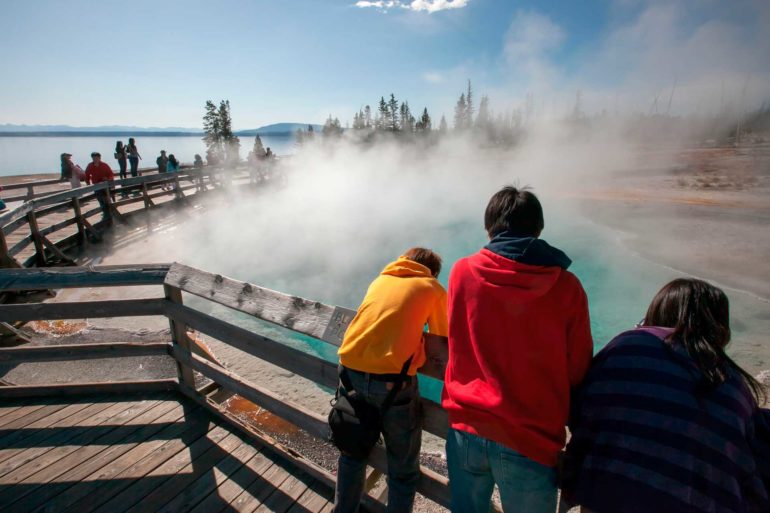Montana’s tourism industry is now through its second summer under the cloud of COVID-19. Despite the challenges presented in 2020, including stay-at-home orders, closed borders, businesses and schools, Montana’s abundance of open space and outdoor activities drew millions of travelers. In fact, some locales were overwhelmed with the number of visitors, which stretched the capacity of campgrounds, public lands and some businesses as they operated with limited staffing, hours and customer capacity. It made for challenges that some were eager to face, as it meant a return of business, while others were dismayed with the crowds.
How Tourism Fared in 2020
2020 estimates from the Institute for Tourism and Recreation Research (ITRR) indicate that 11.13 million travelers came to the Montana during the year, down 12% from 2019. Half of those travelers (5.6 million or 51%) came during the third quarter (July-September). Despite the interruptions to business as usual, nonresident travelers spent $3.14 billion in Montana in 2020. While still a 16.5% decrease from 2019, the drop was less bleak than anticipated.
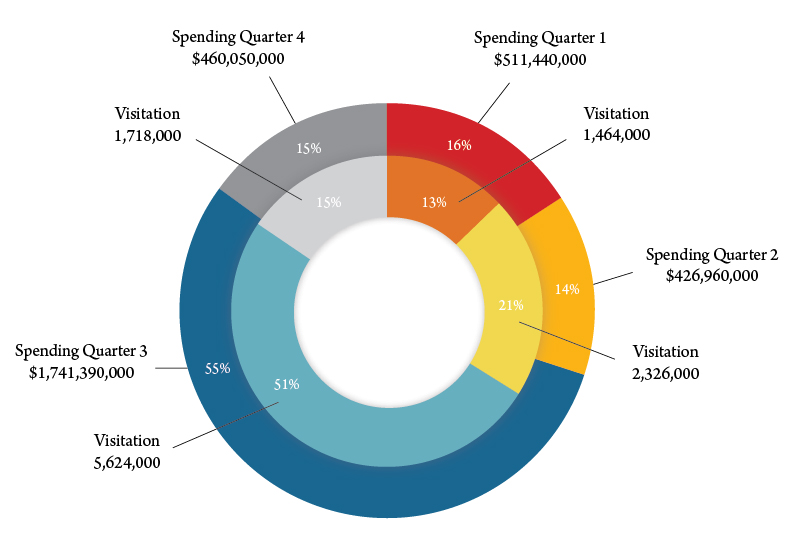
Travel spending by out-of-staters directly supported $2.60 billion in economic activity in the state, with a combined industry output of $4.4 billion. Directly supported were 30,750 jobs and $776 million in employee compensation, and a contribution of $212.7 million in state and local taxes.
Indicators of Another Successful Year in 2021
Even with the uncertainty surrounding the continued presence of COVID-19, Montana residents used the experiences gained in 2020 to position themselves for another busy year entering 2021. ITRR will soon begin analysis of data collected during the third quarter of the year from nonresident travelers to the state. In the meantime, signs point toward evidence of a busy summer.
Already for 2021, Yellowstone National Park has set visitation records for the months of May (473,799), June (938,845) and July (1,081,062) with no signs of slowing down in August or September. Glacier National Park also began implementing a summer reservation system to access the popular Going-to-the-Sun Road.
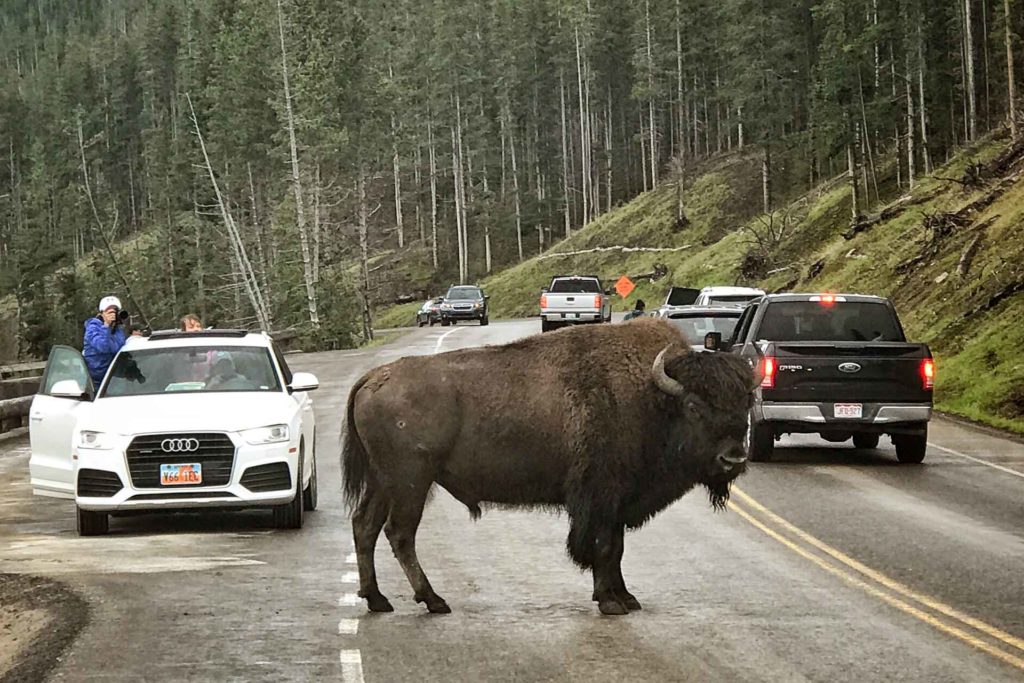
While Montana State Parks experienced record-setting visitation in 2020, data from 2021 indicate things have been even busier than before. Both residents and nonresidents have flocked to state parks – with an estimated 1,570,134 visitors as of July 2021, an increase of 11.1% over 2020, and a 44.1% increase over 2019.
Air travel to Montana is also showing a rebound, with the number of deboarding passengers increasing over 80% (January-July) from 2020. While not back to pre-pandemic levels, 2021 figures are down just 8% from 2019 deboardings through July.
Lodging facility use tax collections have far surpassed both 2020 and 2019 figures for the first two quarters of this year. Assessing statewide collections for the second quarter of 2021 showed a 204% increase from 2020, which is a 32% increase over 2019. While there is some variation across the state in this pattern of bed tax collection recovery, the regions adjacent to our two national parks account for the majority of the trend.

An Important Piece of Tourism – Locals
As a state that relies heavily on the economic impact tourism provides, a key component to facilitating a healthy tourism industry is maintaining a positive relationship between visitors and residents. Anecdotal reports from public land managers and local tourism partners suggested two things: First, visitors arriving to Montana in 2020 and 2021 were different than in previous years, and second that the level of use on public lands from residents and nonresidents in 2020 and 2021 has been higher than in previous years.
Part of ITRR’s annual surveying efforts include conducting in-person surveys with residents across the state. For nearly 30 years, ITRR has asked residents if they agree or disagree with three specific questions: 1) Do the overall benefits of tourism outweigh the negative impacts? 2) If tourism increases in Montana, will the overall quality of life for Montana residents improve? 3) In recent years, is the state becoming overcrowded because of more tourists?
Trend data from 2020 indicate that a majority of Montanans (75%) agree that the overall benefits of tourism outweigh the negative impacts. However, 42% of Montanans agreed that the state is becoming overcrowded because of more tourists, a 31% increase from 2019 and the highest reported agreement level since 1994.
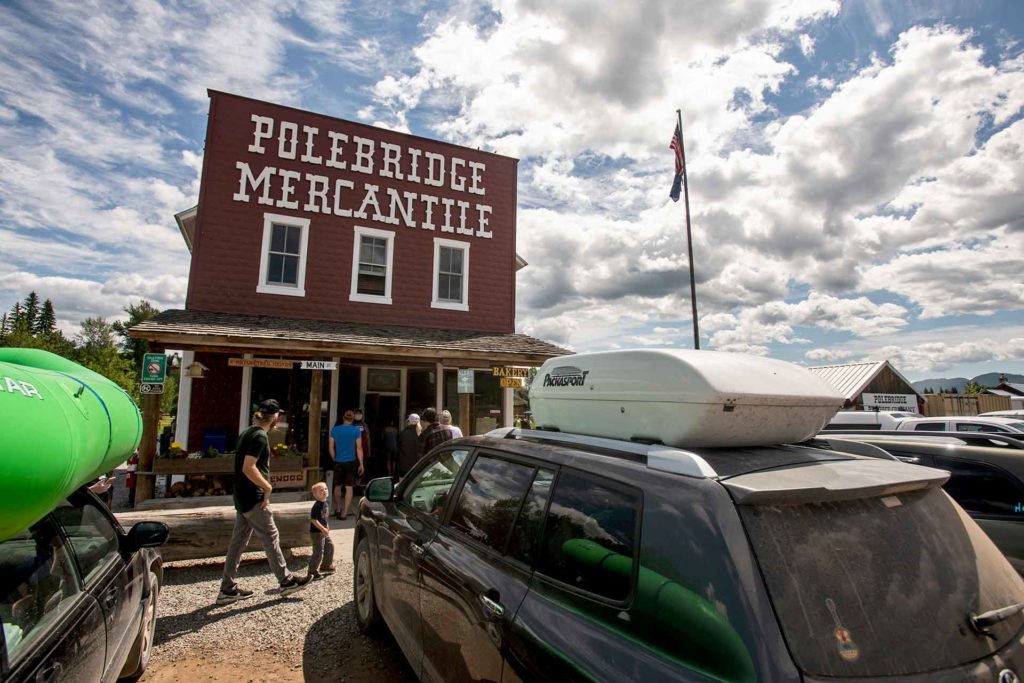
These results also echo a similar report conducted by ITRR during 2020 that found residents still perceived visitors and tourism in a positive light, just less so in 2020 when compared to years past. It could be the case that many people are simply venturing out into the great outdoors for the first time, lacking a proper visitor etiquette many Montana residents have come to expect from those who choose to travel to the state under more normal circumstances. It could also be the case that the behavior they are seeing from other visitors is actually that of their fellow residents, prompting questions about the current state of public land use in Montana by residents.
For third quarter of 2021, ITRR specifically focused on gaining a better understanding of residents’ public land use in Montana over the past 12 months, including: camping, perceived staffing levels by public land agencies, visiting new locations and trying new activities, among other topics.
Preliminary results (July-August) show, overall, 60% of residents surveyed had camped in Montana in the past 12 months (including trailer and RV camping). Of those, 76% had camped at a designated public campground (state park, national park, etc.). Furthermore, 38% of residents camped on public land at dispersed or undesignated sites, followed by 22% who found solace camping in the backcountry.
When asked if they had visited any public lands in Montana in the past 12 months they had not previously visited, 37% of residents said yes, indicating almost two-thirds of residents were content returning to their usual locations. When analyzing results by travel regions, the only region to report over 50% of its residents visiting new public lands was in southwest Montana (56%). Conversely, 85% of respondents in Missouri River Country (northeastern Montana) had not visited a new public land area.
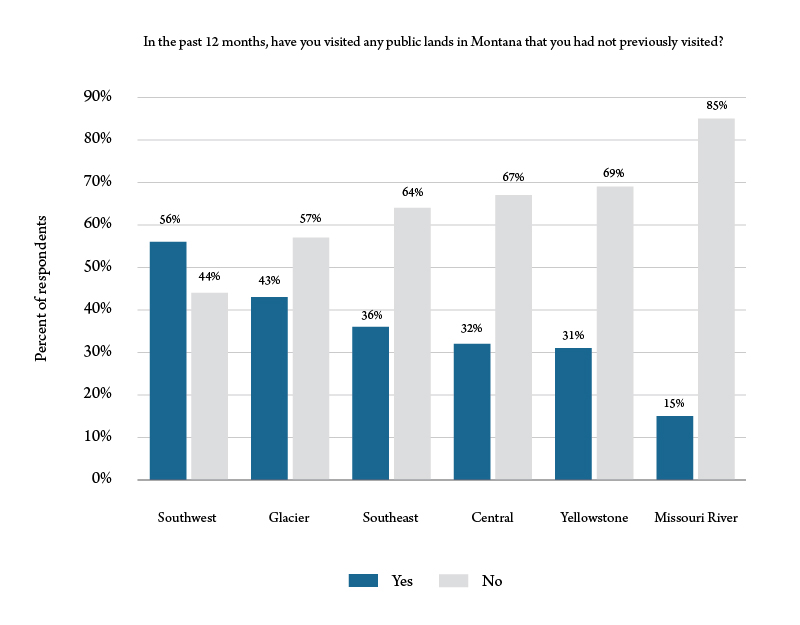
Another area of concern, particularly to public land managers, is the perception of staffing levels on public lands by associated management agencies. Even without the recent increase in outdoor recreation, the ability to properly staff public lands has often been a challenge for a state like Montana – one that has a small population and a large swath of land to patrol.
When asked if they felt public land management agencies in Montana are sufficiently staffed, 62% of respondents said no. Much like the visitation to new public lands in Montana, results varied widely across the six travel regions. Missouri River Country was the only travel region to report that the public land management agencies in their region are sufficiently staffed (60%).
Public lands are important to Montanans and a strong attraction for visitors. With the increasing popularity of outdoor activities and public lands seen during the pandemic, adequate staffing on these lands is vital for the health of the land and safety of those visiting them. It also highlights the crucial reality of finding the balance between the importance of tourism to Montana’s economy and the support for the industry from residents.
The path through Montana’s second pandemic summer tourism season has been one with less uncertainty than the previous year, though the remainder of 2021 still faces plenty of unknowns. As the Delta variant of COVID-19 has become prevalent, traveler confidence has waned. According to Destination Analysts, 63% of American travelers have a high degree of concern about contracting the virus, even with 72% reporting they have received a COVID vaccine. Travelers postponing a trip due to concerns about the Delta variant has increased to 43%, while 28% canceled a trip.
Americans are still excited to travel during the next 12 months, with over 70% indicating a high level of excitement at the idea, though there has been a recent downward trend in those who have plans for leisure travel over the next three months. There is a mix of optimism and hesitancy, and only time will tell how this current surge in the pandemic affects people’s willingness to travel throughout the remainder of this year.


